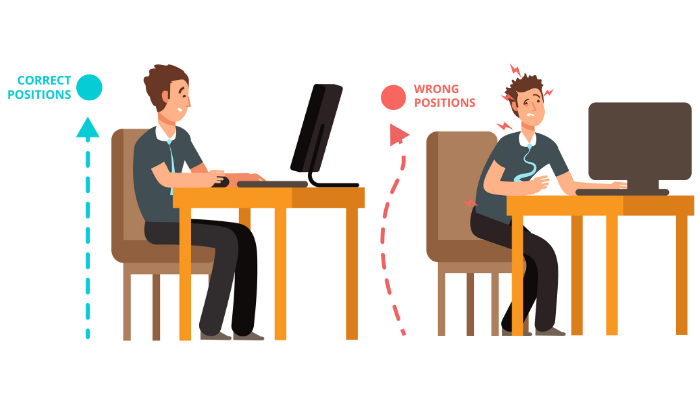Since the pandemic began, companies had no choice but to transition and make telecommuting options available to every employee. Telecommuting has even reduced the number of jobs lost due to the pandemic. Pew Research Center reports that 90% of the jobs lost between February and April 2020 occurred in duties that couldn’t be carried out remotely. Many employees now work from home during the pandemic, and many see this as the future of work. But even with the best of planning and the most sophisticated devices at employees’ disposal, high-level productivity isn’t guaranteed because of one thing often overlooked by many people: working from home ergonomics.
Working from home ergonomics looks to address the challenges people face when working from home. While working from home is a dream for employees, they face many challenges. The biggest obstacle to successfully working from home is designating a space – physically and mentally – that helps establish boundaries for yourself and others. Working from home ergonomics addresses challenges that have to do with body posture, ergonomic workspace at home, gadgets utilities, and it offers ergonomic recommendations for remote workers. Irrespective of the location, remote workers must create a space that helps ensure engagement and efficiency.
Here are some essential work-from-home tips that remote workers can adopt to improve work-from-home ergonomics:
You might also be interested to read: 5 FAQs About Work From Home
Create a work schedule
Just like in the office, remote workers must always create a work schedule when working from their remote location because it helps with time management. The daily plan must have a defined office hour, as well as a clearly stated daily priority. Remote workers must also be corporately dressed for impromptu virtual meetings. Also, their schedules must have break times.
Workplace set-up
Telecommuting allows remote workers to have a virtual office. To work effectively, a remote worker must have a workplace set up from their remote location. In doing this, they must take into consideration the desk and chair, computer, and supporting tools set up. Chair and desk height must be suitable for the worker’s comfort. The wrist, shoulders, and back must maintain their natural positions so employees can work for hours without strain or fatigue.
Technology
Telecommuting works on the back of digital technology. Remote works must have all their software programs and hardware equipment checked and updated to prevent unexpected downtime.
Communication
Effective communication is the grease that oils the machine and ensures it keeps running. It is necessary more than ever that communication is clear and understood when telecommuting. Remote workers must communicate effectively with colleagues and supervisors.
Healthy habits
Working from home has all tendencies to make employees adopt unhealthy habits very quickly. Remote employees must pay copious attention to their eating habits and ensure they eat healthily. Remote workers must regularly exercise areas that focus on areas that suffer, such as the waist, back, and wrist, when working.
A poor workplace ergonomics leads to fatigued and unproductive workers. Working from home ergonomics play a crucial role in enhancing employee productivity. When done well, it can be key to providing a better work experience for employees who are working remotely and yield better outcomes in the long run.
References:
- Before the coronavirus, telework was an optional benefit, mostly for the affluent few by Drew Desilver||March 20, 2020
- History of Telecommuting by Allied Telecom||January 14, 2016
- 10 ergonomics dos and don’ts for those now working from home by BU Today Staff||April 1, 2020
- Ergonomics – Covid19 remote workstations by Harvard Environmental Health & Safety
You might also be interested to read:
Related Topics:






